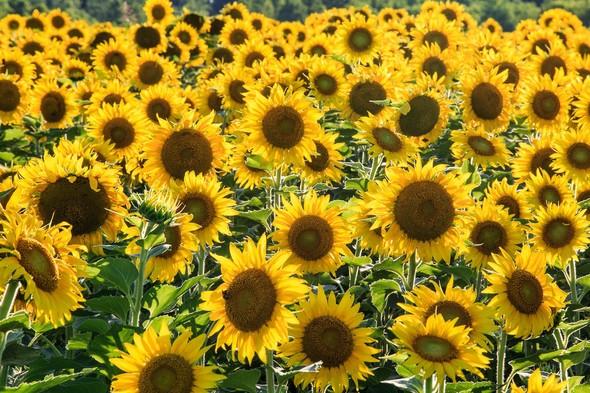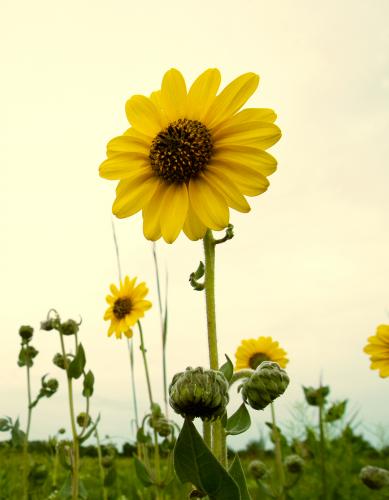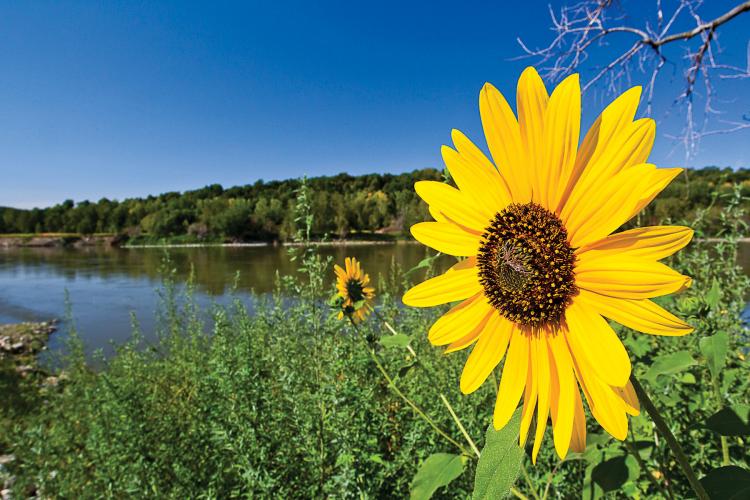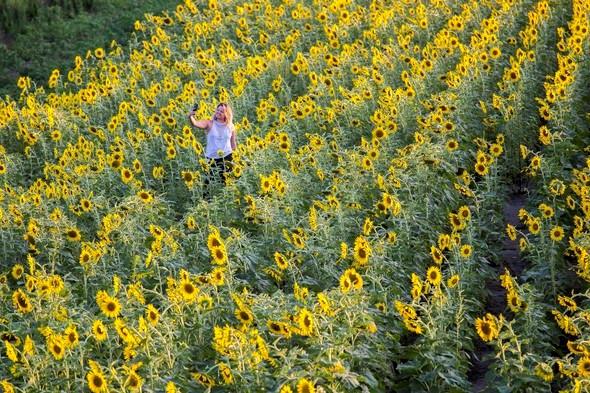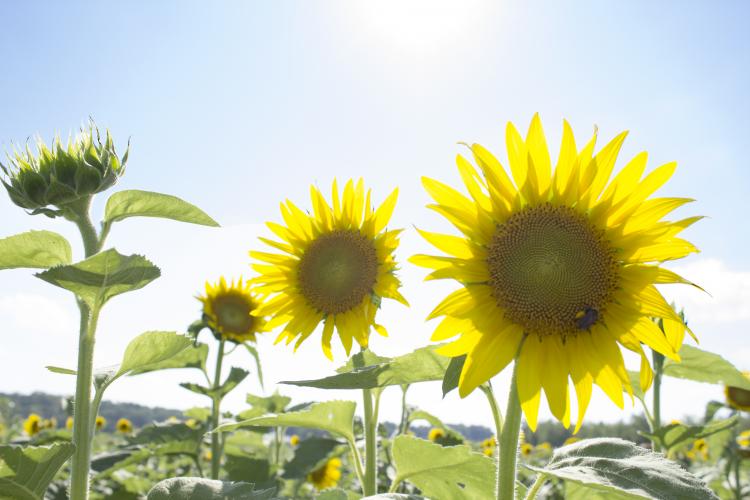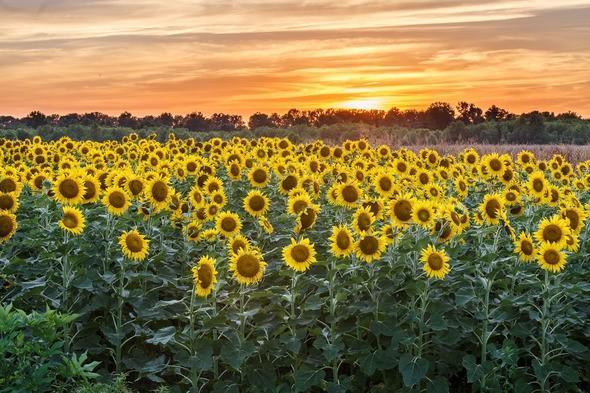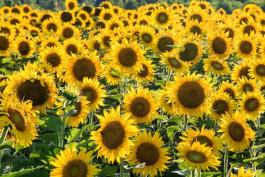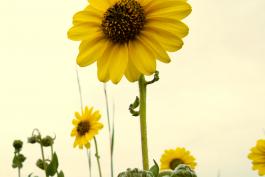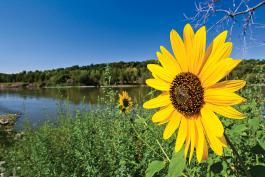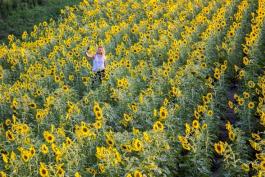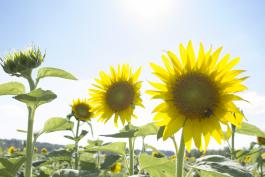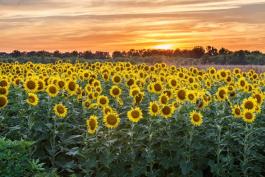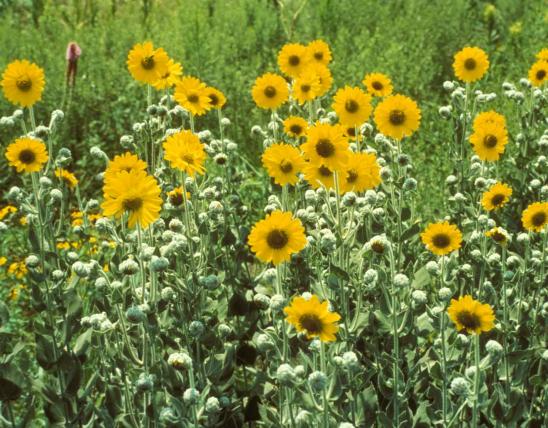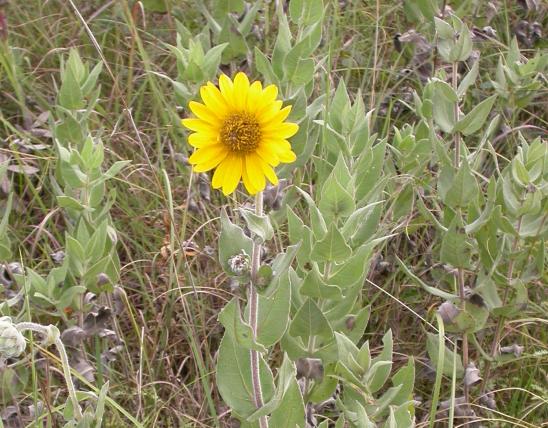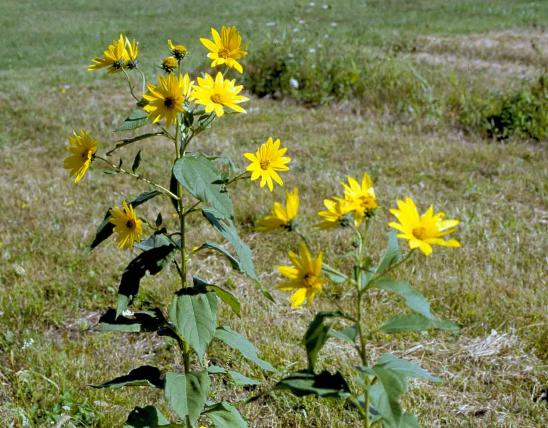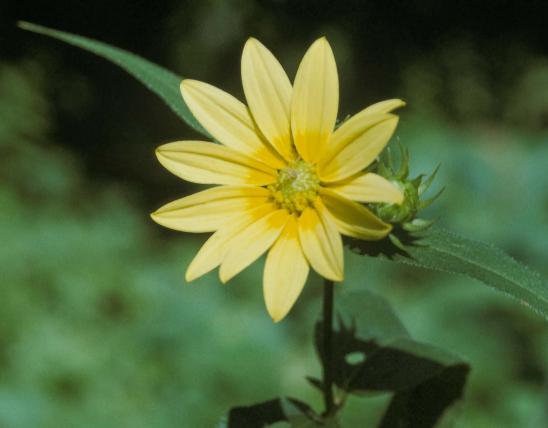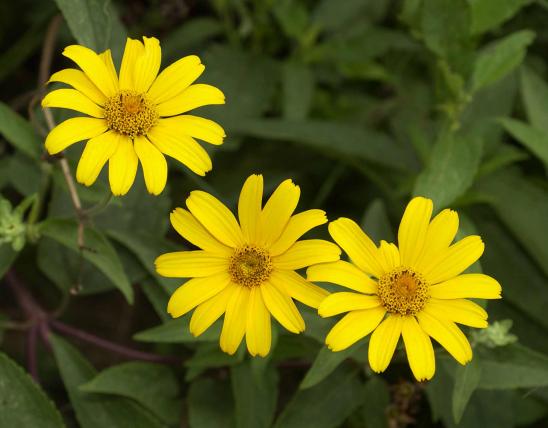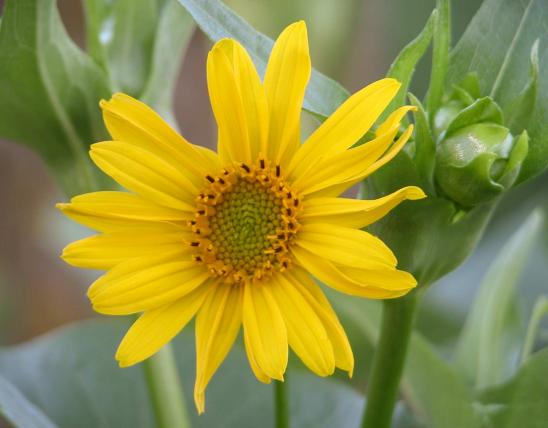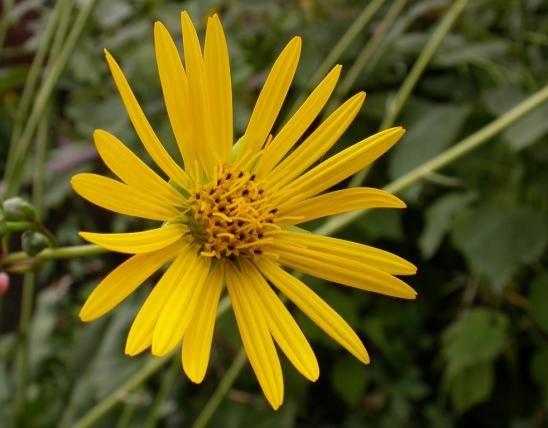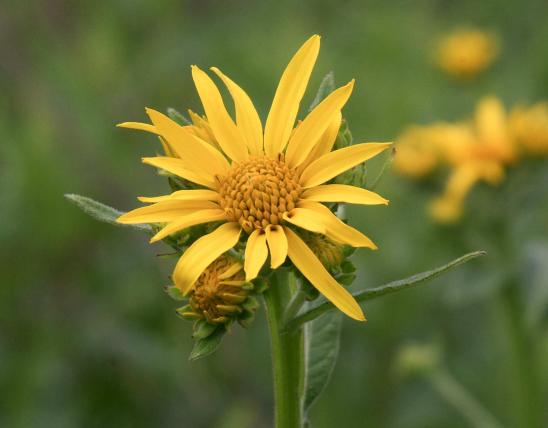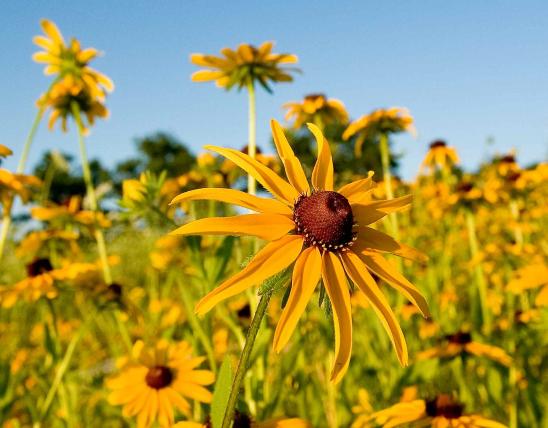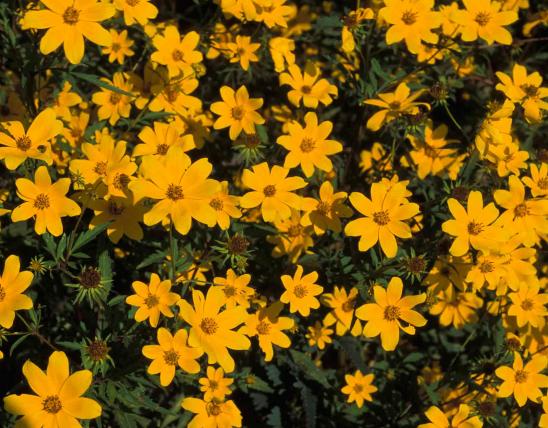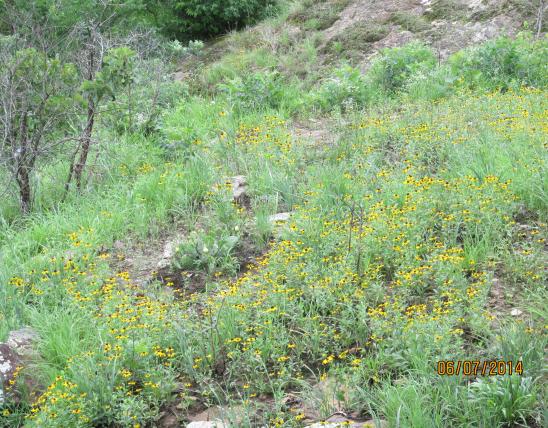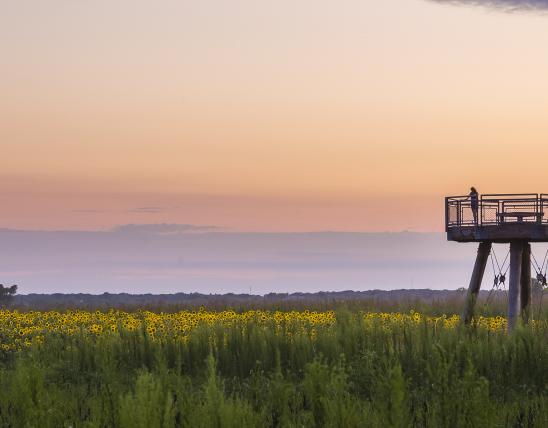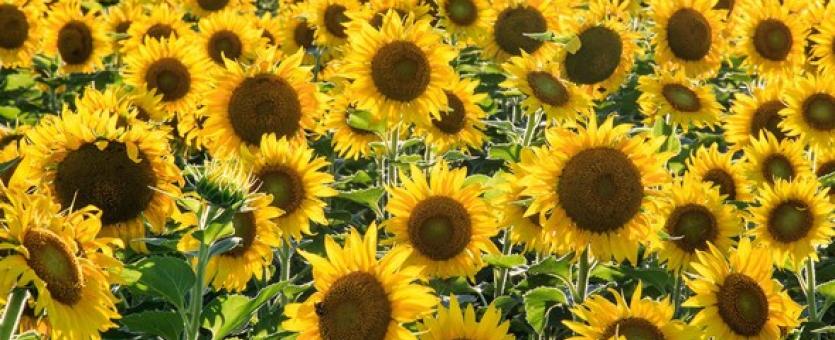
Common sunflower is an annual sunflower, extremely variable in height and appearance, with hairy stems. The flowerheads of the wild form are many per plant, large, with brown disks, and frequently with a double set of yellow ray florets. The disk is usually a couple inches in diameter, not including the rays. Blooms July–November. Cultivated forms often have only one, often huge, flowerhead per plant. The leaves are large, ovate to broad, with irregular, large teeth, mostly alternate except the uppermost ones. The lower leaves are usually heart-shaped (a key identifier). All leaves are rough and hairy.
Similar species: There are 16 species of Helianthus in Missouri. Common sunflower’s leaves have long petioles, lacking wings, and are rather broad, with the larger leaves ovate to heart-shaped with irregular, large teeth, and are mostly alternate except those at the very top. Also, its disks are reddish brown to dark purple, while several other sunflowers have yellow disks.
For an overview of Missouri’s sunflowers, visit their group page.
Height: usually to 7 feet in wild forms; cultivated forms can be much larger.
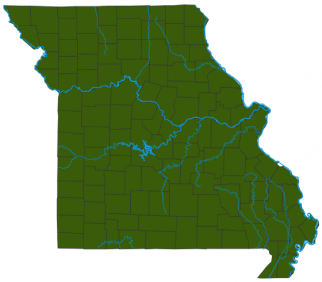
Statewide, scattered. Mostly absent from the Ozarks and Mississippi Lowlands.
Habitat and Conservation
Grows scattered in wasteland along roadsides as well as in cultivation. No one knows for sure if this species is truly native to Missouri, since Native Americans domesticated and distributed the plant early, and European settlers also spread the plant around. The species was brought to Europe as early as the 1500s. The most famous domesticated common sunflower, the unbranched, large-headed ‘Mammoth Russian’ type, was developed in Russia, then brought to America.
Status
Scattered and common.
Taxonomy: What do we mean when we call a plant a "sunflower"?
- Often, when a plant is called a "sunflower," it refers to this species, Helianthus annuus, or one of its many cultivated forms.
- But it is also correct to call any species in genus Helianthus a sunflower, as this is the sunflower genus (Helia = sun; anthus = flower).
- Even more broadly speaking, the third largest tribe (subgroup) of the aster family is the Heliantheae, which contains genus Helianthus plus about 2,500 other species globally; many of these resemble and are called sunflowers.
- Finally, although it is also called the "aster" or "daisy" family, many people call the entire Asteraceae "the sunflower family." The second largest family of vascular plants in the world, comprising more than 32,000 species globally, the Asteraceae includes sunflowers, asters, daisies, coneflowers, dandelions, ironweeds, goldenrods, zinnias, marigolds, snakeweeds, yarrows, thistles, cornflowers, lettuces, chicory, wormwood, tarragons, ragweeds, blazing stars, artichokes, knapweeds, beggars ticks, chrysanthemums, and many, many more. The family used to be called the Compositae, because all share the same basic type of composite (multiflowered) flower heads.
Human Connections
The common sunflower is a tremendously useful plant historically as well as today.
This species is the most important crop plant that is native to the United States. It is cultivated worldwide for sunflower oil, which is made from the seeds.
At one time Missouri was a leading producer of sunflowers.
The plant is a longtime favorite ornamental for gardeners. Sunflowers are a favorite midsummer selection for cut-flower arrangements.
Sunflowers provide food for livestock and wildlife. MDC plants sunflowers in food plots for wildlife in several of its conservation areas. Some of these areas, full of spectacular blooms, have become popular destinations for photographers.
The common sunflower is beloved worldwide by painters, photographers, poets, and novelists.
Many baseball players snack on sunflower seeds while in their dugout, instead of the chewing tobacco they historically used.
In her old age, the grandmother of the person who wrote this field guide page had sunflowers as a favorite flower. To cheer herself up, she taped a big cluster of imitation sunflowers to her walking cane. Maybe you know someone who especially loves sunflowers, too.
To learn more, read the fascinating (and fun) book The Sunflower, by ethnobotanist and enthusiastic sunflower specialist Charles B. Heiser.
Ecosystem Connections
Birds and small mammals eat the seeds, which are rich in oil and proteins, as well as the foliage. Mammals that browse the foliage include rabbits, woodchucks, and deer. The rich seeds are eaten by songbirds (such as finches, sparrows, and cardinals), upland game birds (such as bobwhite, prairie chicken, doves, and turkey), squirrels, and mice.
Many kinds of insects visit the flowers for nectar and pollen. Pollinators include a wide array of bees, including honeybees, bumblebees, digger bees, and megachilid (leaf-cutter) bees, sweat bees, and others. Some species of bees specialize in visiting sunflowers (genus Helianthus) almost exclusively. Butterflies, skippers, soldier beetles, syrphid flies, bee flies, and others collect nectar and pollen.
Other insects chew the foliage, roots, or other plant parts, or suck the juices of sunflowers: leaf beetles, long-horned beetles, weevils, leaf-miners, gall flies, tephritid fruit flies, grasshoppers, aphids, treehoppers, leaf hoppers, spittlebugs, and plant bugs. Moth and butterfly caterpillars that eat sunflowers include the painted lady, gorgone checkerspot, silvery checkerspot, and a number of tiger, tortricid, and noctuid moths. Several of these species are especially strongly associated with sunflowers and may be limited to them as food plants.
With all the insects visiting the flowers or chomping the leaves, other, predatory insects lie in wait for them: crab spiders and other spiders, assassin bugs and ambush bugs, robber flies, and so on. Insectivorous birds like dickcissels, meadowlarks, bobolinks, flycatchers, and indigo buntings forage in grasslands and pastures for the bountiful insects humming around the blossoms.
Because they grow readily on open or disturbed ground, sunflowers help bind the soil.
